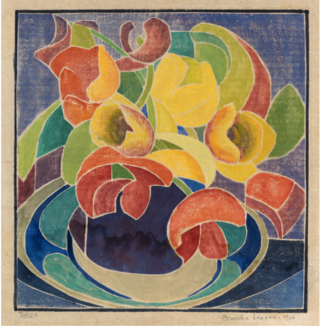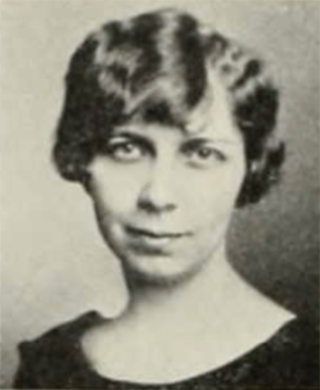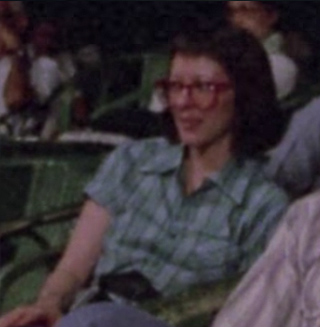
Provincetown is a New England town located at the extreme tip of Cape Cod in Barnstable County, Massachusetts, in the United States. A small coastal resort town with a year-round population of 3,664 as of the 2020 United States Census, Provincetown has a summer population as high as 60,000. Often called "P-town" or "Ptown", the locale is known as a vacation destination for its beaches, harbor, artists and tourist industry.
Jane Anderson is an American actress, playwright, screenwriter and director. She wrote and directed the feature film The Prize Winner of Defiance, Ohio (2005), and wrote the film It Could Happen to You (1994), starring Nicolas Cage. She won an Emmy Award for writing the screenplay for the miniseries Olive Kitteridge (2014).

The Huntington Museum of Art is a nationally accredited art museum located in the Park Hills neighborhood above Ritter Park in Huntington, West Virginia. Housed on over 50 acres of land and occupying almost 60,000 square feet, it is the largest art museum in the state of West Virginia. The museum's campus is home to nature trails and the C. Fred Edwards Conservatory, a subtropical and tropical plant conservatory. The museum's collection includes American and European paintings, sculptures, prints, and drawings, as well as glass pieces manufactured in West Virginia and the Ohio Valley, American folk art, Chinese and Japanese decorative objects, Haitian art, firearms, and decorative arts from the Near East. In addition to its permanent collections, the museum hosts traveling exhibitions and houses the James D. Francis Art Research Library, the Grace Rardin Doherty Auditorium, and five art studios where artists in residence are periodically hosted and classes are held. The Huntington Museum of Art holds one of the largest collections of art in the state of West Virginia.

Favianna Rodriguez is an American visual artist, and activist, known for her work in political posters, graphic arts, and public art. Her artwork topics include global politics, economic injustice, interdependence, patriarchy, migration, and sexual liberation. She worked as a director of the national arts organization CultureStrike, which engages writers, visual artists, and performers in migrant rights.

The Provincetown Art Association and Museum (PAAM) in Provincetown, Massachusetts is accredited by the American Alliance of Museums. It was founded as the Provincetown Art Association on August 22, 1914, with the mission of collecting, preserving, exhibiting and educating people about the work of Cape Cod artists. These included Impressionists, Modernists, and Futurists as well as artists working in more traditional styles. The original building at 460 Commercial Street, is listed on the National Register of Historic Places.

Susan Bee is an American painter, editor, and book artist known for her work in book form and as co-editor and co-founder of M/E/A/N/I/N/G.
Linda Carmella Sibio is an American performance artist and painter. She is also an advocate for mentally disabled artists and individuals.

Blanche Lazzell was an American painter, printmaker and designer. Known especially for her white-line woodcuts, she was an early modernist American artist, bringing elements of Cubism and abstraction into her art.
William Rush Dunton Jr was a founder and early president of the American Occupational Therapy Association. He is also recognized for his collection of, and scholarship about, American quilts.

Danielle Anderson, known by her stage name Danielle Ate the Sandwich, is a singer-songwriter from Fort Collins, Colorado.

Agnes Weinrich was an American visual artist. In the early twentieth century, she played a critical role in introducing cubist theory to American artists, collectors, and the general public and became one of the first American abstractionists. A life-long proponent of modernist art, she was an active participant in the art communities of Provincetown and New York. Early in her career, she traveled widely in Europe and spent extended periods studying in Paris and Berlin. She also studied art in Chicago, Provincetown, and New York. During most of her career, she worked in a Provincetown studio during the warm months and a Manhattan studio during the cold ones. Weinrich's easel work included oil paintings, watercolors, and pastels. She also made block prints and etchings and drew using pencil and crayon. Her paintings, prints, and drawings appeared in solo and group exhibitions throughout her career and she received favorable critical attention both during her life and after her death.
Mary Harvey Tannahill was an American painter, printmaker, embroiderer and batik maker. She studied in the United States and Europe and spent 30 summers in Provincetown, Massachusetts, with the artist colony there. She was instructed by Blanche Lazzell there and assumed the style of the Provincetown Printers. She exhibited her works through a number of artist organizations. A native of North Carolina, she spent much of her career based in New York.

Packed in a Trunk: The Lost Art of Edith Lake Wilkinson is a 2015 documentary film about American artist Edith Lake Wilkinson, who painted in Provincetown, Massachusetts from 1914 to 1923.
Anna Heyward Taylor was a painter and printmaker who is considered one of the leading artists of the Charleston Renaissance.

Provincetown Printers were a group of artists, most of them women, who created art using woodblock printing techniques in Provincetown, Massachusetts during the early 20th-century. It was the first group of its kind in the United States, developed in an area when European and American avant-garde artists visited in number after World War I. The "Provincetown Print", a white-line woodcut print, was attributed to this group. Rather than creating separate woodblocks for each color, one block was made and painted. Small groves between the elements of the design created the white line. Because the artists often used soft colors, they sometimes have the appearance of a watercolor painting.

Mabel Hewit (1903–1984) was an American woodblock print artist, particularly the white-line style of the Provincetown Printers.

Mildred McMillen (1884–1940) was an American printmaker.

Miriam Laufer was an American artist. Laufer is best known for her paintings of women, as well as her paintings in abstract expressionist, geometric abstraction, and pop art styles. In addition, she was an early participant in the feminist art movement starting in the 1960s. She also worked as a calligrapher, illustrator, graphic designer and teacher.

Candy P. Jernigan was an American multimedia artist, graphic designer, and set designer, instrumental in the avant-garde art scenes of Provincetown and New York City in the late 1970s and 1980s. She is best known for her vivid collages of found objects she described as "rejectamenta", presented in diagrams to absurd effect. Jernigan is also known for having designed the covers and jackets of dozens of music albums and books as a colleague of Paul Bacon.

Dorothy Lake Gregory (1893–1975) was an American artist best known for her work as a printmaker and illustrator of children's books. She took art classes in public school and at the age of fourteen began making drawings for a New York newspaper. She studied art in Paris in her late teens and thereafter took classes at Pratt Institute, the Art Students League of New York, and the Cape Cod School of Art. Her career as a professional artist began with her participation in an exhibition of paintings at the Art Students League in 1918. Her first book illustrations appeared three years later. She first showed prints in an exhibition held in 1935. She continued as artist, illustrator, and printmaker for most of the rest of her life employing throughout a different style for each of the three media. In 1956, a critic contrasted the "cubistic" painting style of that time with the book illustration style for which she was better known, saying he had heard gallery-goers incredulously remark, "But she can't be the same Dorothy Lake Gregory."















